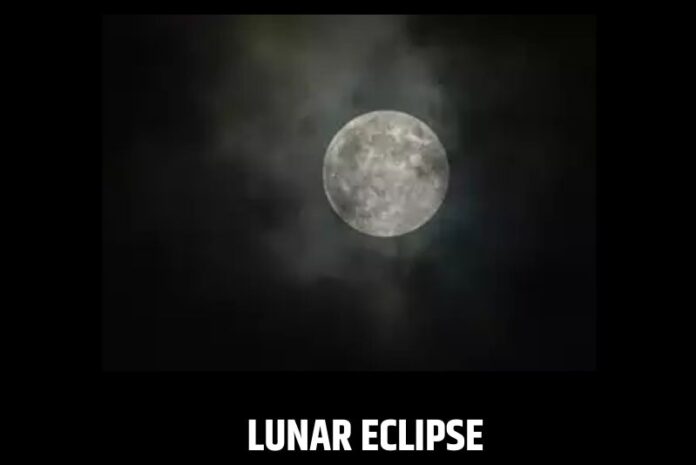Penumbral lunar eclipse in 2024 is scheduled to start at 10:24 AM Indian Standard Time (IST), peak at 12:43 PM IST, and end at 3:01 PM IST.
On March 25, 2024, the first lunar eclipse of the year will occur while people celebrate Holi throughout India. Monday morning at 10:24 am is when the penumbral eclipse will start, and it will be visible to everyone in North and South America. However, the phenomenon will not be visible to anyone in India.
On Monday, there will be no religious prohibitions and the temples will stay open. The suntak period, which starts nine hours earlier, will not be taken into consideration because the eclipse will still be invisible to people in India. Generally speaking, this is not the best time to begin auspicious labor or engage in religious activities.

A lunar eclipse happens when the moon appears to “darken” as it moves through the Earth’s shadow. This fleeting event happens around twice a year. Only the planet’s more diffuse outer shadow, referred to as the penumbra, touches the moon’s surface during a penumbral eclipse. Space.com has released information about the forthcoming eclipse, which will last for 4 hours and 39 minutes and terminate at 3:02 pm.
Can the Indians see it?
The penumbral eclipse will still be visible to everyone in North and South America, but not to Indians.
The whole United States, South America, Canada, the United Kingdom, a large portion of Europe, a large portion of Africa, North and East Asia, western Australia, the Arctic, and Antarctica will be covered by the moon eclipse on March 25. Parts of Ireland, Belgium, Spain, England, South Norway, Italy, Portugal, Russia, Germany, the United States, Japan, Switzerland, Netherlands, and France will be able to see the lunar eclipse.
The eclipse will start on March 24 and be visible until dawn in locations further west than Chicago, Illinois.
How would it effect the Holi celebrations?
The moon eclipse coincides with the Holi celebrations, thus there is anxiety about how the sutak time may affect the ceremonies. Fortunately, that will not be the case. The sutak period is unnecessary because the eclipse would not be visible in India. Holi rites and pujas can take place uninterrupted during the auspicious muhurta.
What causes the lunar eclipse?

When the Earth, Moon, and Sun line up, an eclipse happens.. Eclipses can be classified into two sorts based on how they align: lunar eclipses and solar eclipses.
A lunar eclipse occurs during the full moon, when the earth’s shadow hides our view of the moon.
During a lunar eclipse, the Earth passes in front of the Sun, casting a shadow on the moon. The Moon is seen to us because of reflected sunlight, which is obstructed during a lunar eclipse.
There are several stages to a lunar eclipse. During a total lunar eclipse, the Moon initially enters the Earth’s penumbra (the darker outer portion of the shadow). After then, it will go into the darker umbra before moving back to the opposing side’s penumbra and finally emerging from the shadows.
What is a penumbral eclipse, exactly?

When an object is in front of a light source, it casts two different kinds of shadows: the penumbra, which is lighter and more diffuse, and the umbra, which is darker in the center. The Earth in its orbit between the Sun and the Moon experiences the same thing.
The Moon will be partially shaded during a lunar eclipse when it moves through Earth’s penumbra. Penumbral eclipses can be a little challenging to witness. This would seem to us on Earth as a very slight decrease in the Moon’s brightness. The Moon will still be visible to you, but it will seem a little dimmer than usual.
